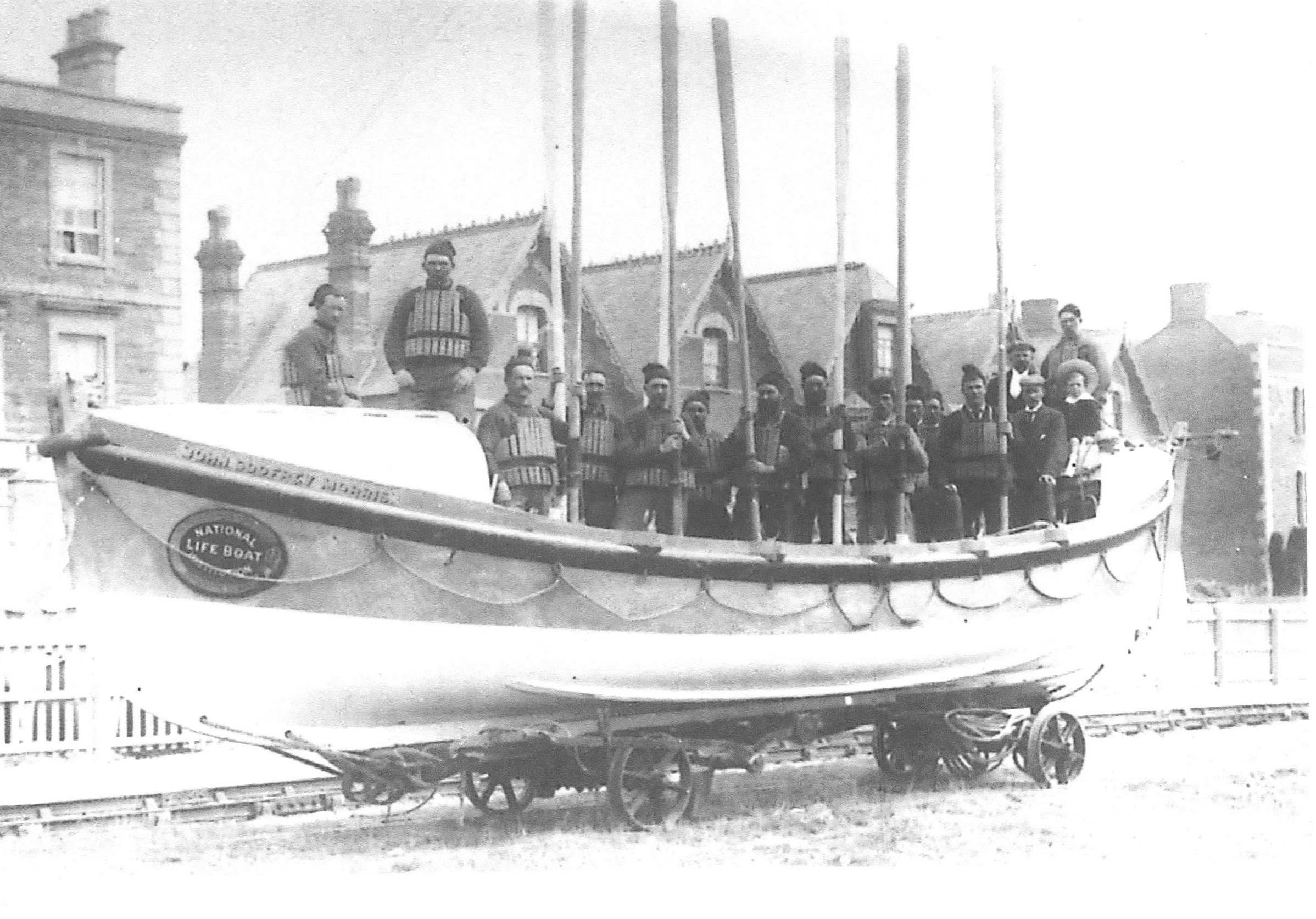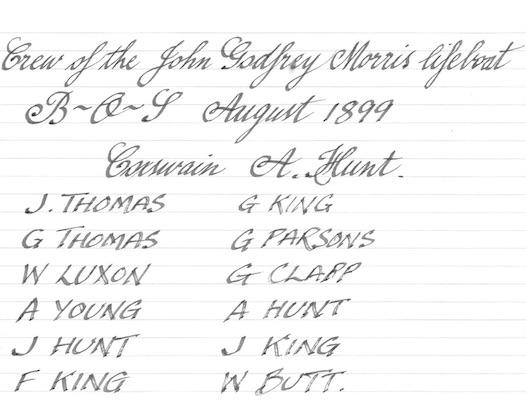

In December 1891, as west-north-westerly gales raged, no less than nine ships were driven ashore in the estuary. The sloop “Elizabeth” had begun to break up, and her crew had taken to the rigging. The lifeboat launched at noon, but all efforts to reach her failed. Time and again they pulled off in the teeth of the gale, but were driven back to the shore. Eventually, exhausted they had to land. About two hours later, the weather moderated a little, and after a second launch, they succeeded in taking off “Elizabeth’s” crew of three. Then seeing the “Flora” in danger of swamping with the crew in the rigging, they took her three men off also.
Another occasion in 1895 when a moderate west-north-westerly gale with heavier squalls caused a great deal of trouble in the estuary. The master of the ketch “Eliza”, arriving off Burnham, decided that the gusty weather was too dangerous to sail up river, and anchored. Unfortunately, before he could alter his lights to indicate he had stopped, another vessel ran into them and both sank, leaving only their masts visible. It looked as if the crews were in the rigging so the lifeboat was launched and made for the scene. However, another vessel anchored nearby hailed them and said that both crews had reached shore safely in their own boats. Two other vessels could then be seen in a dangerous position so the lifeboat headed for the one, which they found had been abandoned. They then went to another ketch and found it also abandoned, without sail and obviously doomed. As there seemed a chance to rescue the previous sloop, they returned to it and put three men on board who raised the anchor, and the lifeboat towed it to safe waters.
Many more rescues were made, but the last rescue in 1897 was the “Nornen” which is still remembered today.
Thanks to June Hill for kind permission to use extracts from her book ‘The History of the Burnham Lifeboats’.
